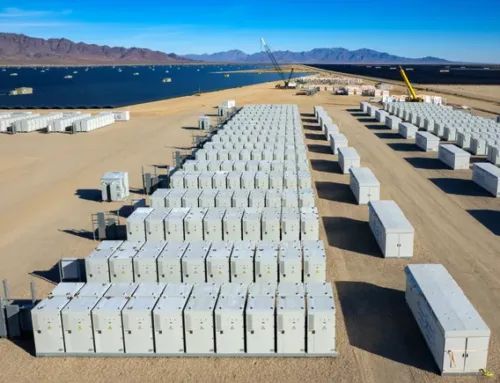The Benefits of Investing in Good Quality Education
April 16, 2025
Everyone knows the value of a good education. For investors, there is also plenty of value to be reaped from investing in education. It ranks among the top 10 sectorsglobally in value, with a worldwide gross value added (GVA) of around US$4 trillion in 2019. With a compound annual growth rate (CAGR) of approximately 3 percent between 2009 and 2019, K-12 education (kindergarten through year 12) stands out for its stability and potential to offer healthy growth rates.
But is this potential applicable to Southeast Asia (SEA)? Those with patience, deep pockets and a willingness to navigate local market conditions could see returns of between 10 and 25 percent when they invest in the region’s international and bilingual K-12 schools, according to a new report by INSEAD faculty and students.
The appeal of education
The private education sector, in particular K-12 education, boasts characteristics that make them attractive “cash cow” investments. Like food and housing, education is seen as non-discretionary expenditure. As a result, revenue streams are steady and more resilient to fluctuating economic conditions. Adding to this stability is the fact that students spend up to 14 years at a K-12 school, ensuring predictable cash flows over an extended period.
Such stable demand gives schools strong pricing power, allowing fees to keep pace with, or often surpasses inflation. The fact that these fees are paid upfront has a positive impact on cash flow, while a relatively fixed cost base means margins improve with every additional student.
There are also high entry barriers. Beside the fact that schools need a strong brand to attract students, the prohibitive financial costs and strict regulatory requirements make setting up a new school a significant undertaking.
Considering these factors, it’s not surprising that education groups, either individual schools or groups of schools, is now viewed as the “new healthcare assets” resulting in hefty valuation expectations in recent years. This potential can be seen in global investors EQT’s recent $5.4bn exit from the education group Nord Anglia, purportedly making 4x on the deal for its investors.
Competitive landscape
SEA offers a unique appeal, though our report found education in the region to be an increasingly competitive and dynamic landscape. This growing interest is driven in part by its favourable economic and demographic factors. The simple fact is more people in SEA can afford to pay for high quality schooling, thanks to rising affluence, a growing middle class and increasing expatriate populations.
The high level of education offered at international schools often stands in contrast to public schooling options in many SEA countries, contributing to growing demand. A fact borne out by higher average assessment scores for private schools across reading, math and science compared to the public education sector. Finally, a desire to learn English or receive a bilingual education, especially in markets such as Thailand and Vietnam, have helped to create a buoyant market.
The dynamic and competitive nature of the K12 landscape in the region is underscored by multiple million-dollar transactions in the private education sector by leading private equity firms in recent years.
The rise in both regional and global investors entering the market over the past decade has driven up valuations of private education providers. This has been further amplified by the limited availability of targets, especially those with the potential to scale. In fact, high-quality targets in the region can command valuations of 14x enterprise value, which compares favourably to the 9x valuations similar investments commanded approximately seven years ago.
Regional differences
While all SEA markets are expected to see continued growth into the medium to long term, our analysis revealed important differences, opportunities and challenges across countries.
At a dollar value of around US$1.3 billion, Singapore is the largest market in the region, reflecting its mature and stable status. The high cost of living and high earnings among its expatriate community means schools can demand – and expect to receive – high fees. However, land is notoriously scarce, with potential plots only coming up every six to seven years, resulting in high costs to entry and expansion. For example, Nexus International School paid over US$300 million for a 30-year leasehold on their new campus plot in 2017. The limited opportunity to start new schools has resulted in a highly incumbent-dominated market.
Vietnam is the second largest market, and Malaysia third, with both enjoying double-digit growth in recent years – a trend expected to continue. Vietnam in particular has benefited from a relatively low cost of living and rising incomes, while a stable currency and friendly tax environment have proved a positive draw for foreign investors. The market has also benefited from a growing expatriate population, partly driven by a shift in global supply chains after the Covid-19 pandemic.
The biggest challenge in Vietnam is one that also impacts other markets such as Thailand, the Philippines and Indonesia, namely: complex regulatory frameworks which can restrict foreign ownership, land use and school licences.
Despite its large and young population (25-30 percent are of school-going age), Indonesia faces additional hurdles, ranging from a fractured market to much lower price points. Educational institutions are also required to be structured under a non-profit framework known as Yayasan (foundation), which poses a significant hurdle for dealmaking.
While Thailand is an established mature mid-sized market, its lower birth rates (compared to the rest of the region), limited availability of relevant schools and significant market fragmentation present specific challenges.
The nascent market in Cambodia has potential for strong growth given that thirty percent of its 70 million population is of school-going age. In addition to the limited supply of quality schools, there is no cap on foreign ownership. While it has lower price points than markets like Thailand, fees have risen by 40-45 percent in the last five years.
Finally, the Philippines is currently the smallest market in the region, with limited student volume and lower tuition fees. While there is growth potential, thanks to a strong preference for private education, investors need to navigate the challenging family-dominated business environment, restrictions on foreign ownership and the comparatively low school fees.
Local knowledge
Regulatory challenges around private schools clearly present the biggest obstacle for investors. There’s always the possibility of rule changes, as was the case in China in the last couple of years, which can have a major impact on the value of private schools.
Understanding the local political mood, as well as the complexities of foreign ownership, local student quotas, licences and investment rules in individual markets is crucial. Many investors rely on the input of local experts to guide them through this regulatory maze. Getting it right can offer a significant competitive edge.
Challenging exits
Our report shows that exits from investments in the sector also present obstacles. Indeed, it is not uncommon for K-12 education assets to stay in their private equity owner’s portfolio for over 10 years.
In part, this is because IPOs are usually ruled out due to sensitivity around publishing schools’ financial information. Concerns over parents’ reactions and the general perception of education as a public good, mean the money-making nature of any education-related asset is often played down. As such, there are not many listed private schools in SEA.
In an ideal scenario, a sale to global strategic investors who have the resources to follow through on the deal would be a way to combine assets and gain immediate regional exposure and as a result, increase the possibility to scale in the future. Such large-scale education assets, made up of a group of schools, clearly have the biggest appeal for long-term investors, such as sovereign wealth funds and pension funds, but such opportunities are limited in SEA.
The challenge is the bigger the asset, the smaller the pool of potential buyers. On the other hand, splitting the assets can undermine the value created through the consolidation. These exit challenges have led investors to explore alternative liquidity strategies. These range from selling physical assets (like school buildings) and leasing them back from the buyer to borrowing against future cash flows of the investment to pay dividends to investors.
As outlined in the report, the K-12 education sector in SEA presents a compelling investment opportunity driven by robust long-term demand and resilient business models. However, investors must navigate complex and diverse regulatory landscapes, intense competition and potential exit challenges. Those who successfully navigate these obstacles are well-positioned to capitalise on the sector’s significant growth potential.
Click here to access the full report.
Search
RECENT PRESS RELEASES
Related Post




